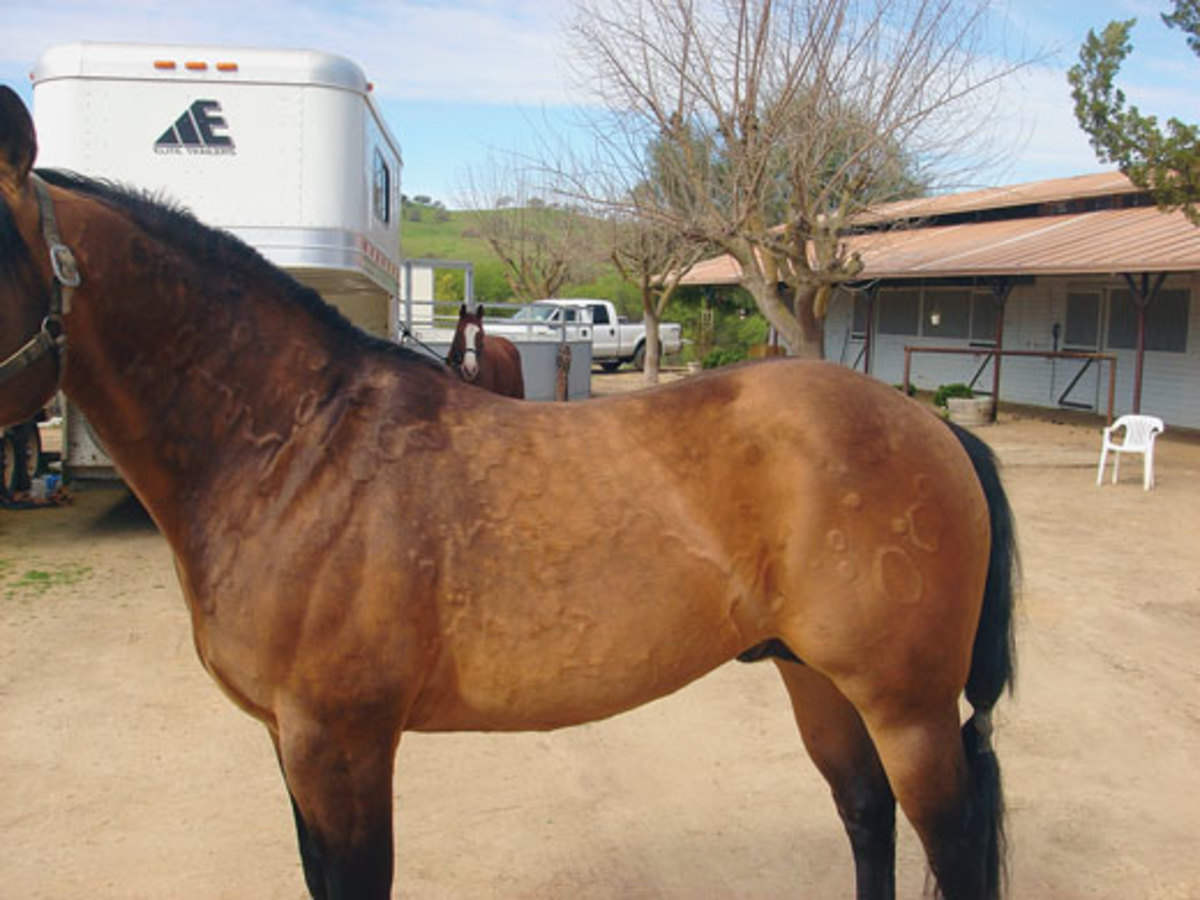
Urticaria is what we call skin lesions, which show up as plaques of edema or swellings of the skin. Most of the time there is
no obvious or apparent cause. It is not really a primary disease of the skin; the skin lesions are just symptoms of a systemic
allergic reaction.
The edema that causes the lesions is caused by leaky wall membranes of the tiny blood vessels called capillaries. When you have an allergic reaction, it is based on the exciting factor, an allergen, reacting with antibodies or defensive white blood cells that results in chemicals of inflammation being produced. These products affect the cellular bridges of the blood-vessel walls, and result in the leaking of plasma, which makes up the edema.
Urticaria is a mild form of an allergic reaction, and is no threat to the well-being of the horse. But it is a nuisance to deal with if it becomes chronic or tends to recur periodically. The most severe immune-mediated condition of this nature is called purpura hemorrhagica, which is life-threatening. It is caused by sensitivity to an antigen of the organism that causes strangles (Streptococcus equi).
It’s been my experience that one usually is never sure of the specific exciting factor with urticaria. Horses usually just develop the lesions spontaneously with no obvious change in environment or management. The list of potential causes is nearly infinite. Food, dust, drugs, insects and stress are examples of possible exciting factors. I checked the list for possible causes in people, and it seems everything you might do or be exposed to could be a factor. There is an approach of intradermal testing with antigens in the horse to try and identify the exciting cause. However, most cases spontaneously resolve themselves or respond to treatment.
Treatment of this condition is based on trying to block the immune-mediated reaction. Corticosteroids such as prednisolone or dexamethasone (i.e., brand name Azium) usually result in at least a temporary cure. I would comment here that people should refrain from administering a corticosteroid without the supervision of their veterinarian. Excessive dosing can have severe side effects, the main one being laminitis. Sometimes with chronic or recurring forms of urticaria, horses are put on an antihistamine as an alternative to corticosteroids. Changes in the environment or management can be tried if certain exciting factors are suspected.










